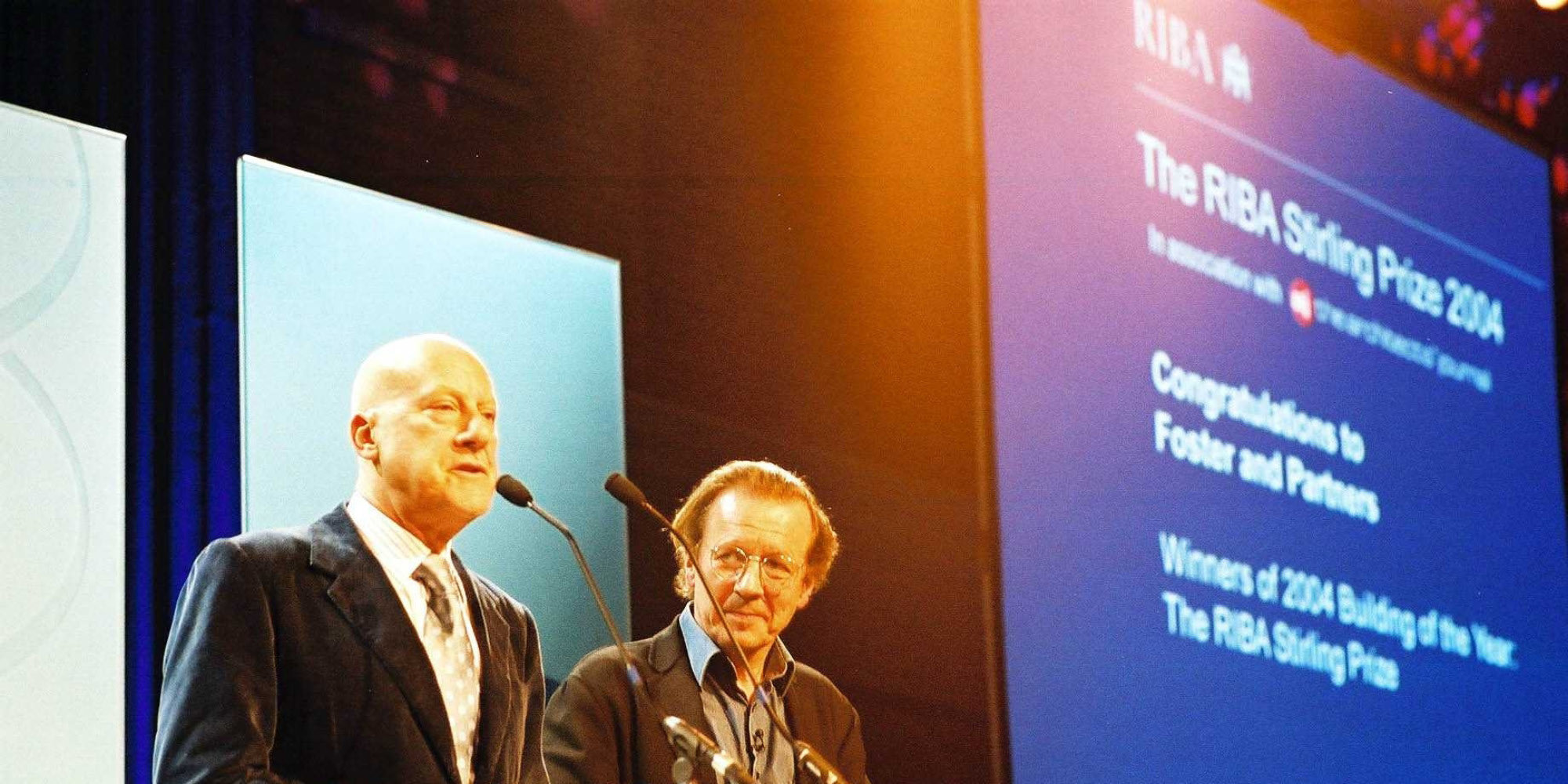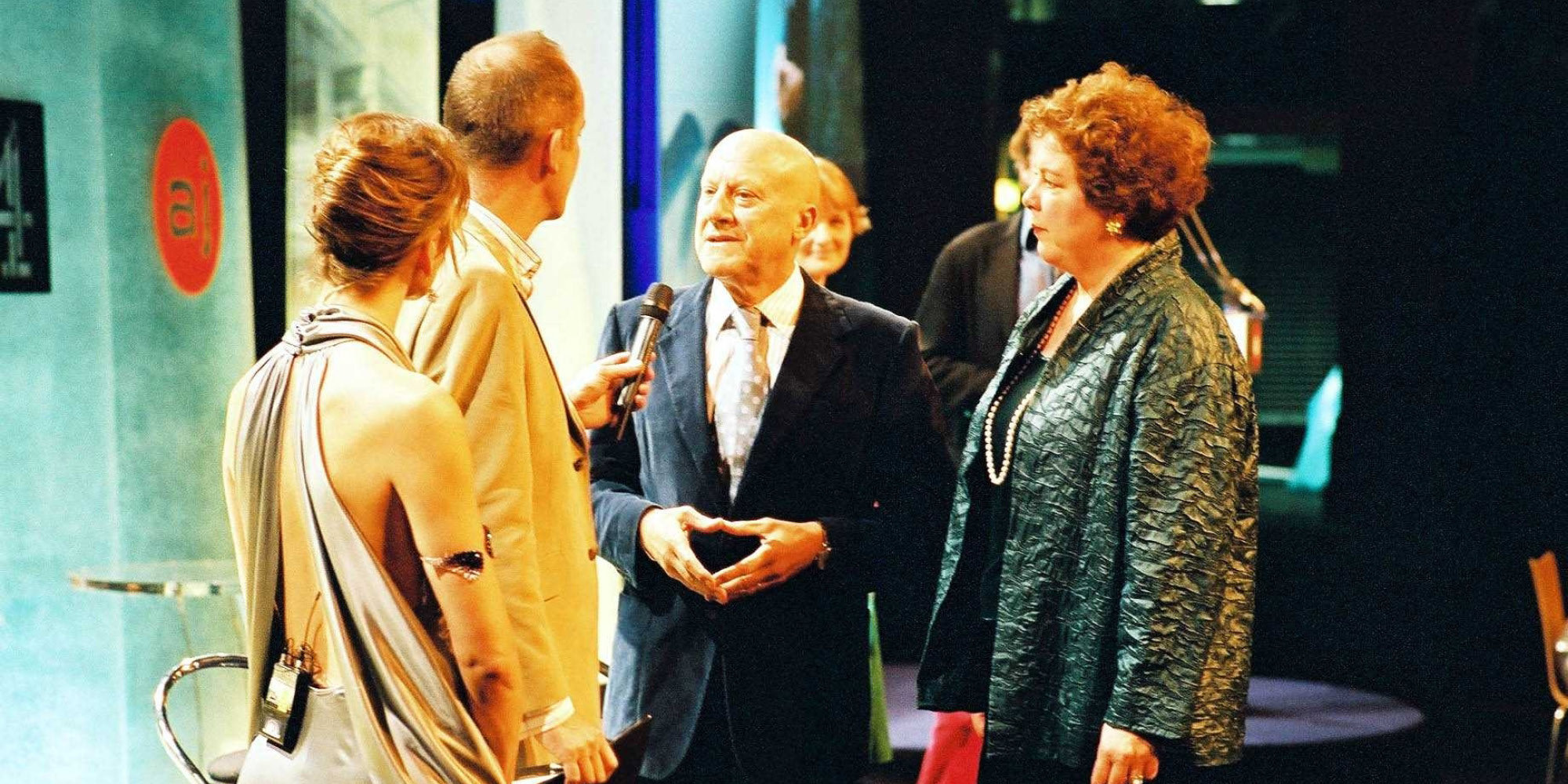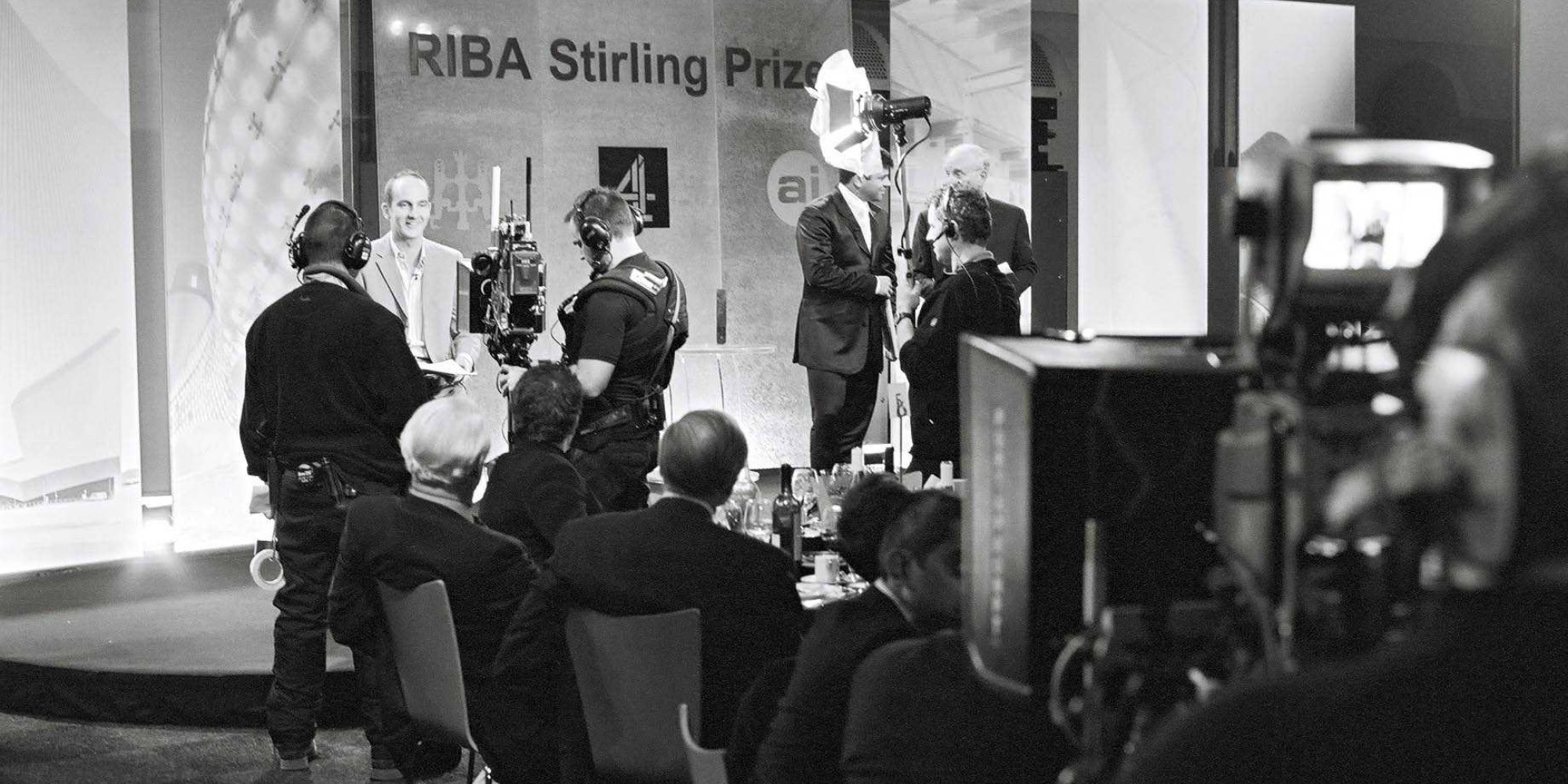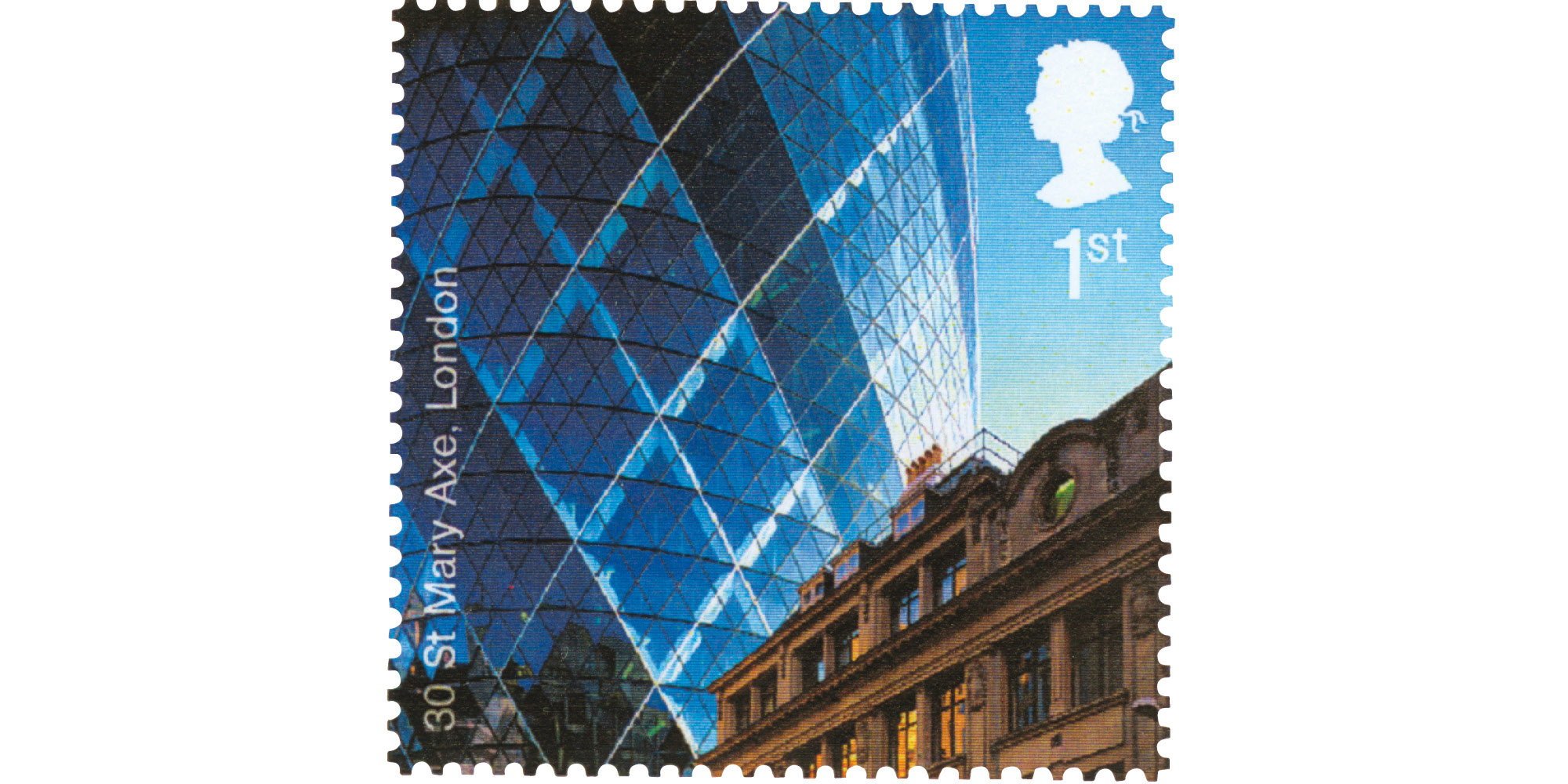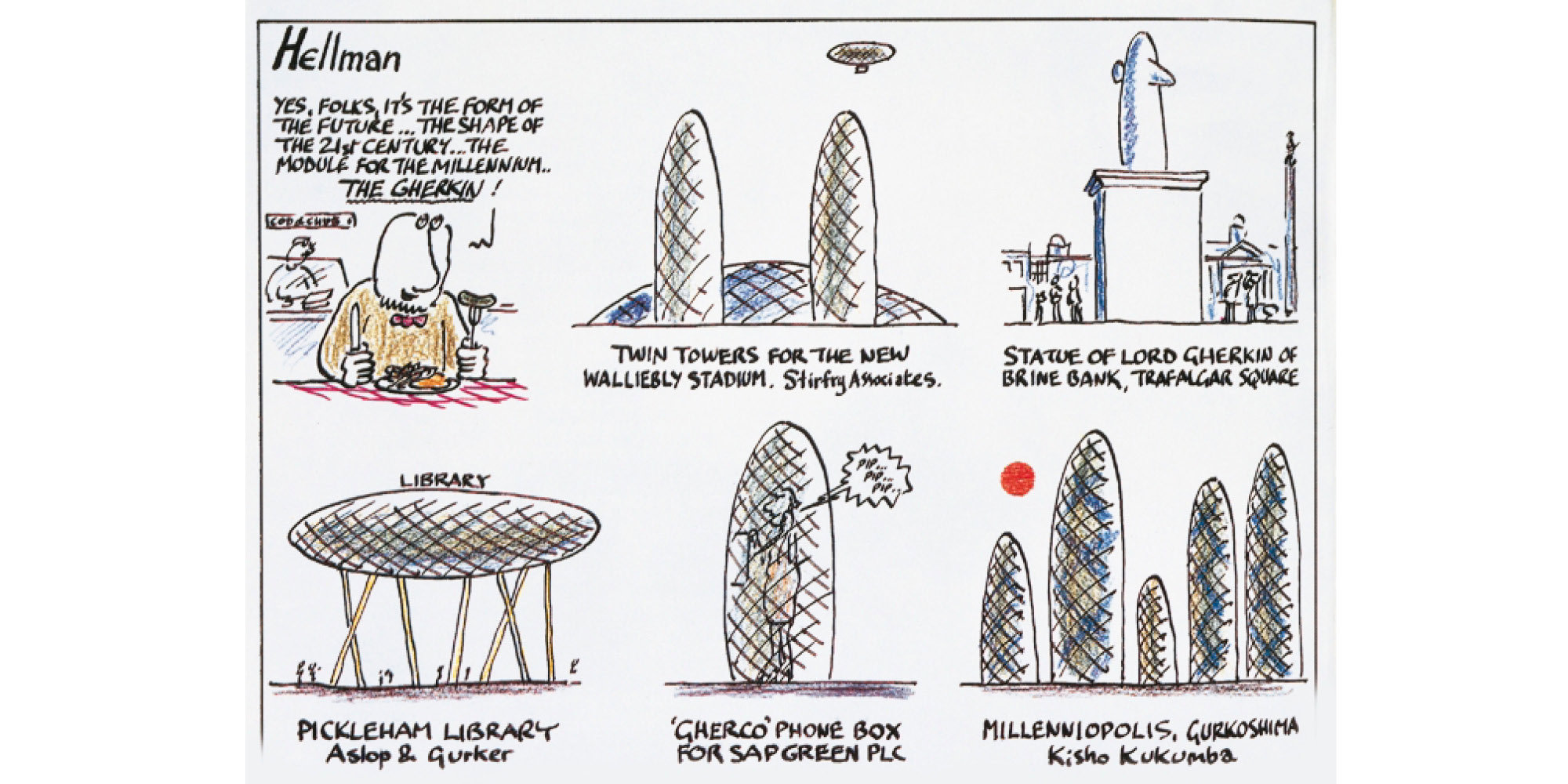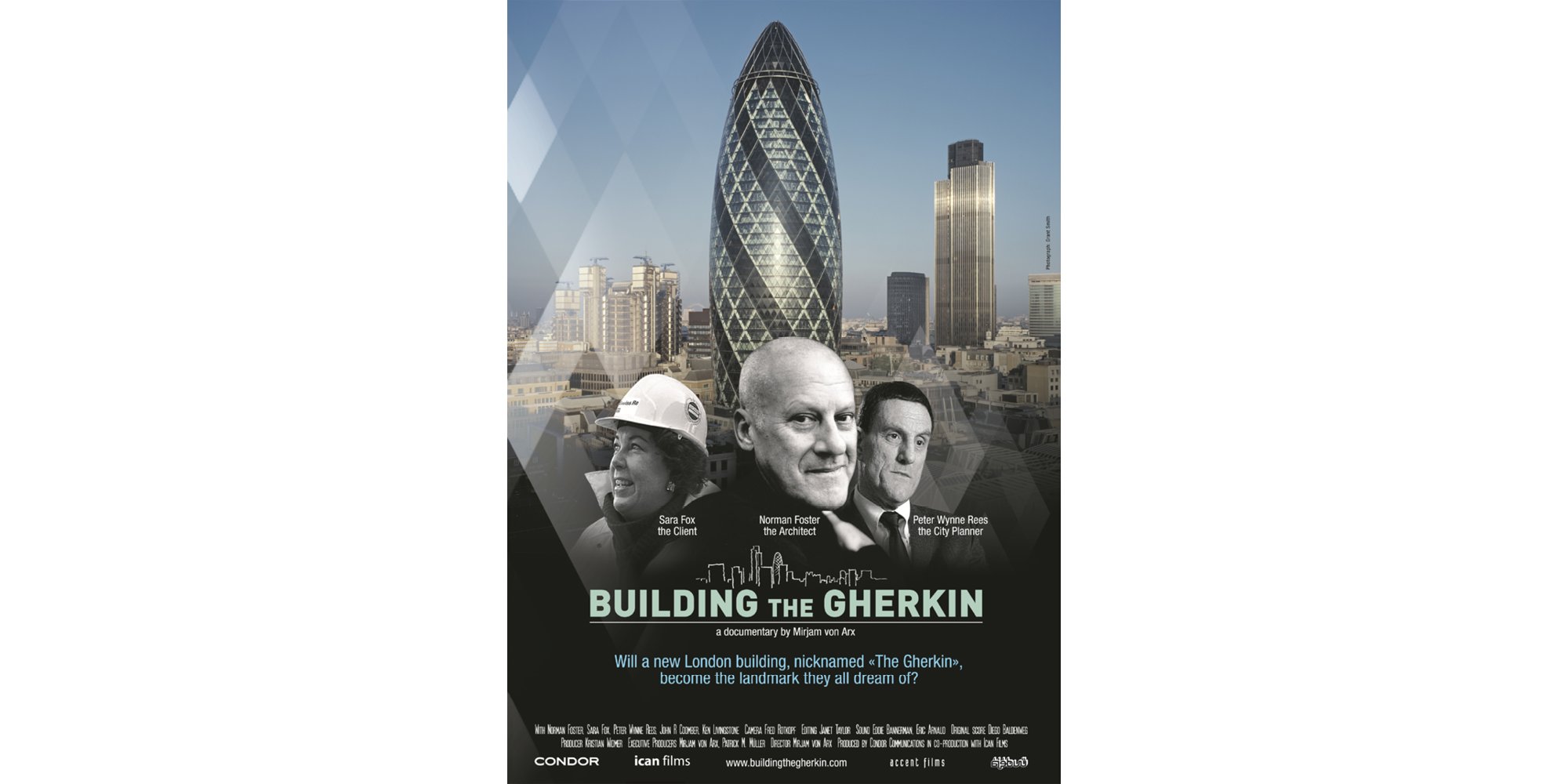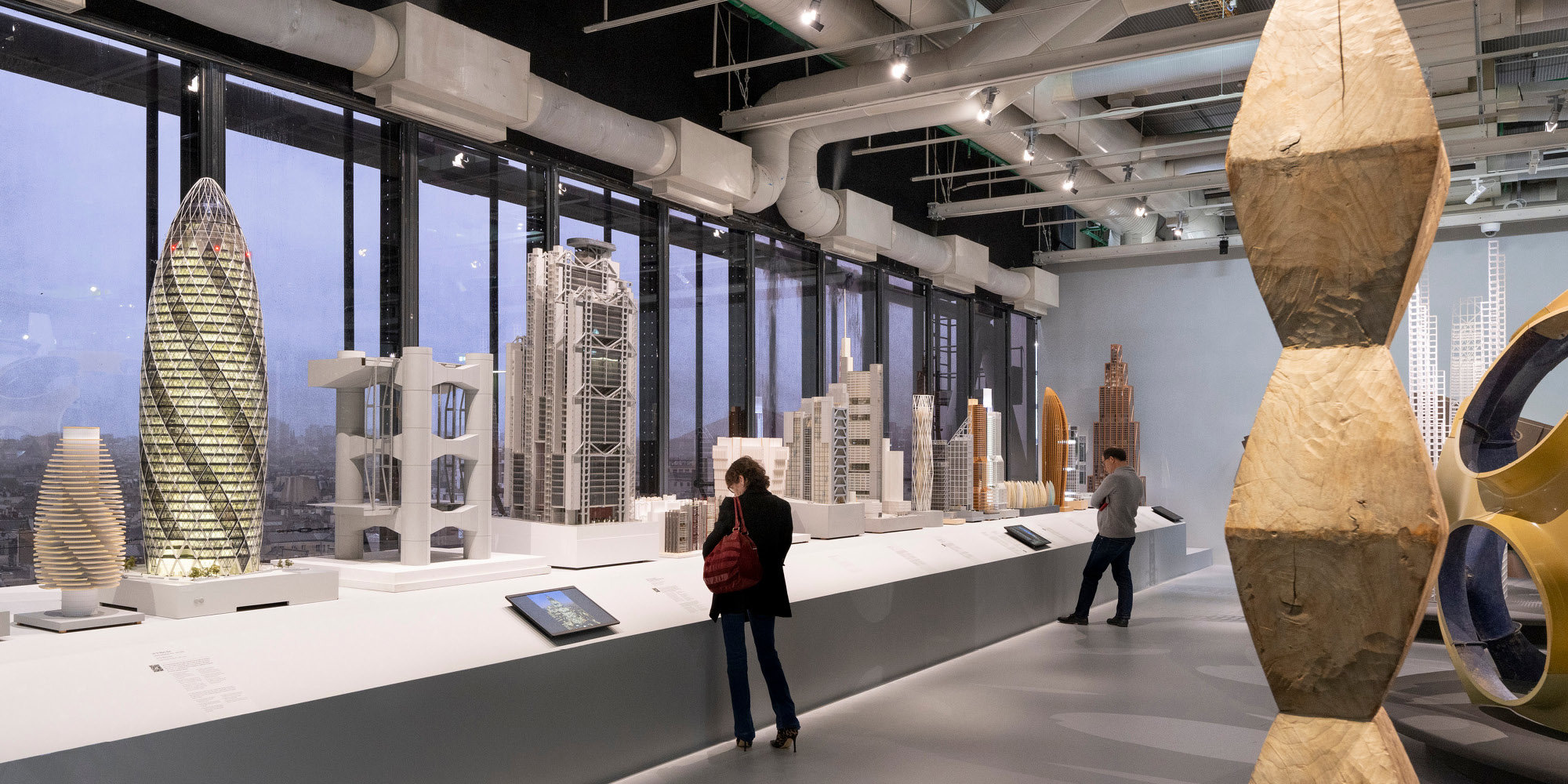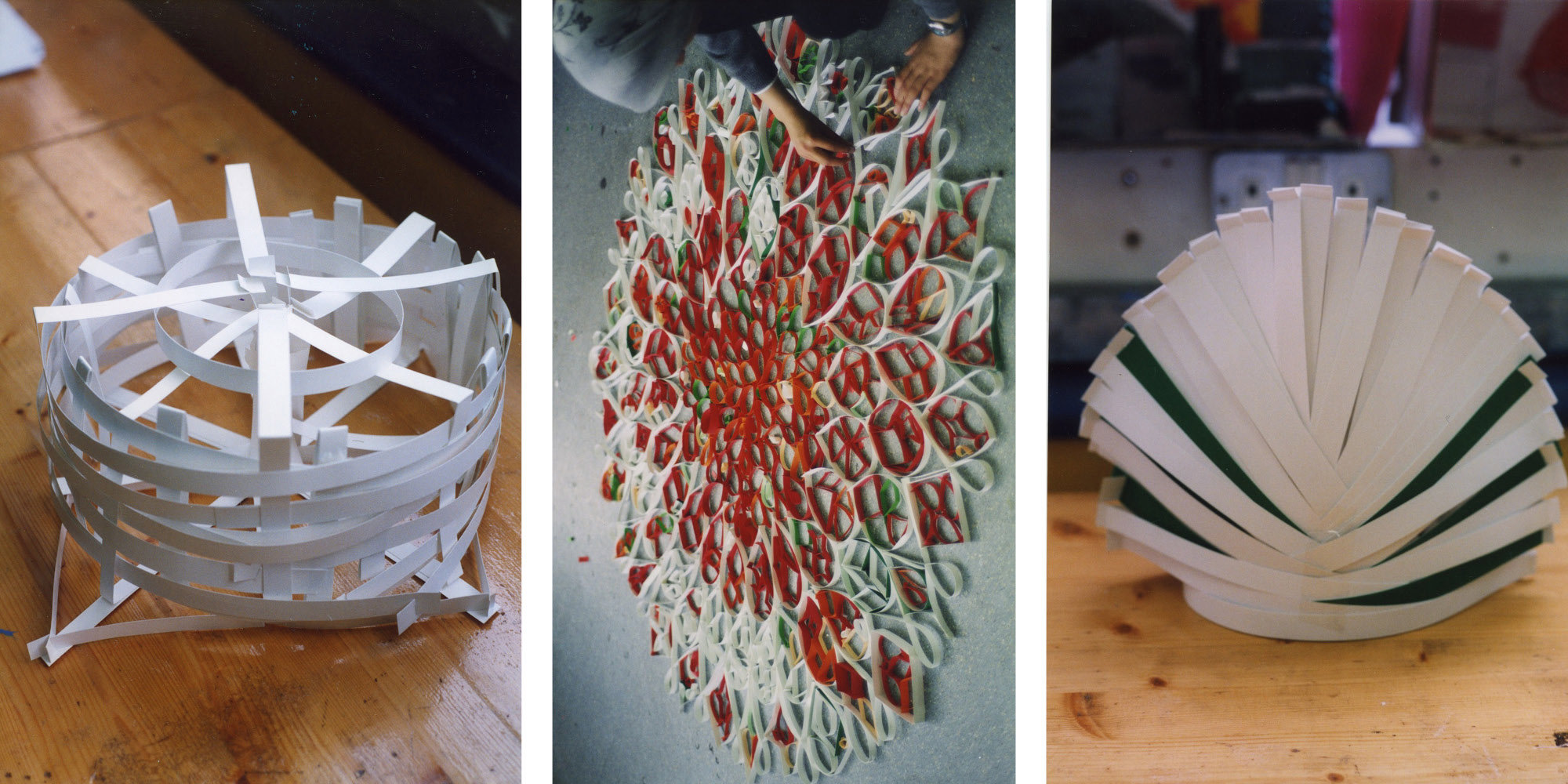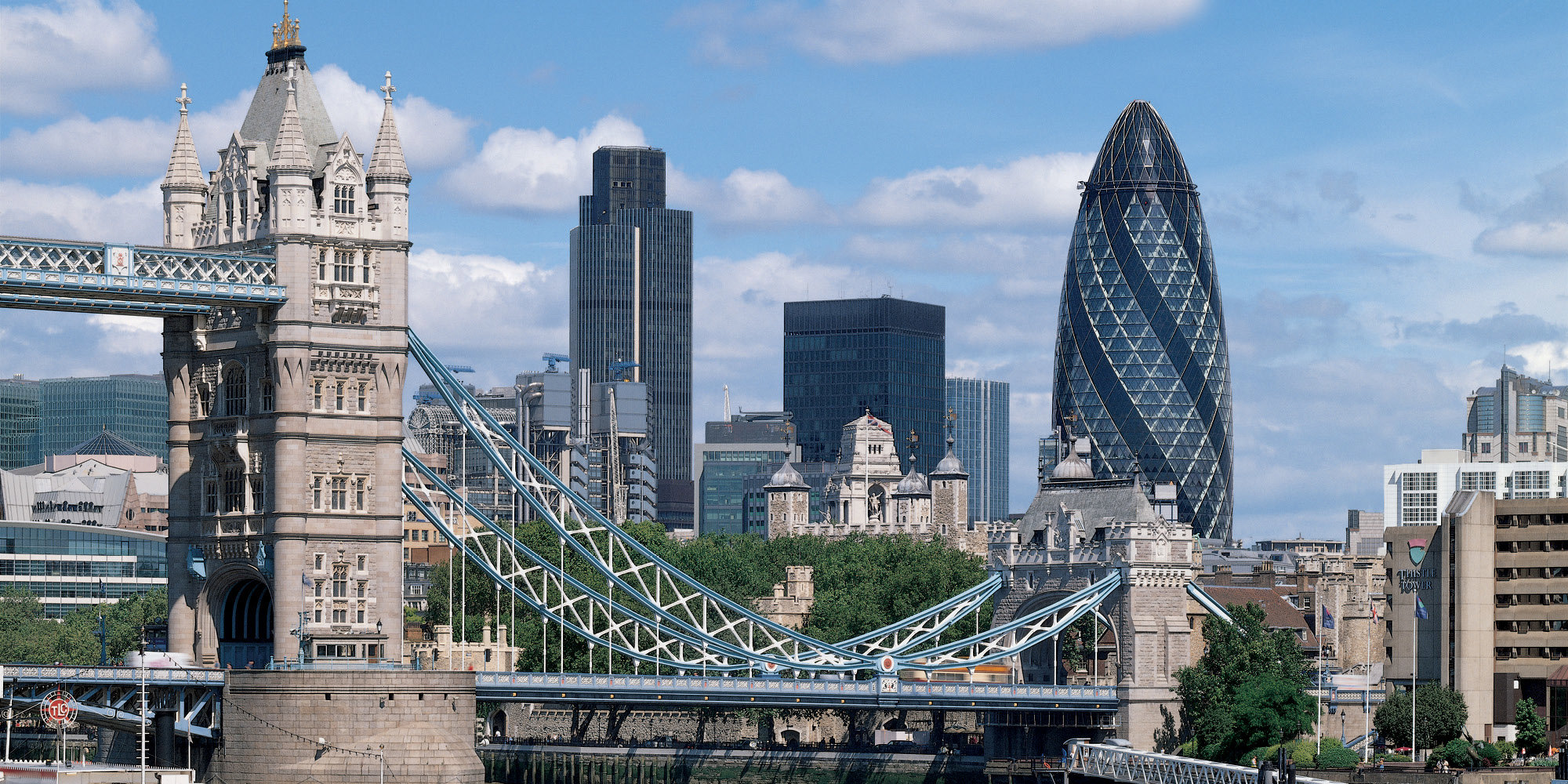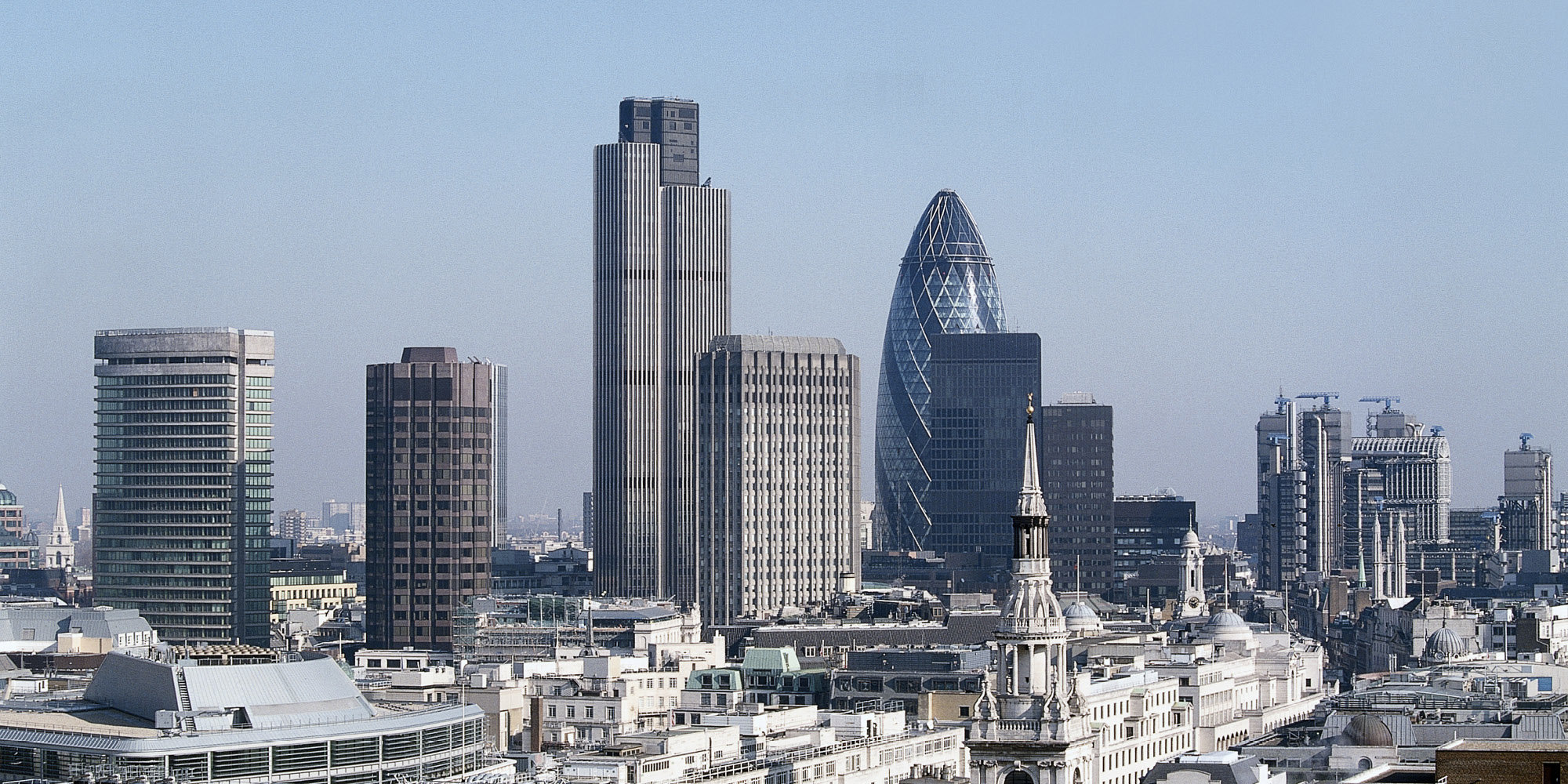Next month will mark twenty years since the completion of 30 St Mary Axe, previously known as the Swiss Re Building, and fondly nicknamed ‘the Gherkin.’ In celebration, we visited our archive to look back at some of its defining moments over the past two decades.
Opening, April 2004
Foster + Partners completes London’s first environmental skyscraper.
Located in the heart of the City of London, the tower is rooted in a radical approach − technically, architecturally, socially and spatially. Forty storeys high, it provides 46,400 square metres net of office space together with an arcade of shops and cafés accessed from a newly created piazza. At the summit is a club room that offers a spectacular 360-degree panorama across the capital.
Conceptually the tower develops ideas explored in the Commerzbank and before that in the Climatroffice, a theoretical project with Buckminster Fuller that suggested a new rapport between nature and the workplace, its energy-conscious enclosure resolving walls and roof into a continuous triangulated skin. Here, the tower’s diagonally braced structure allows column-free floor space and a fully glazed facade, which opens up the building to light and views.
Norman Foster and the client team at the media open day, 2004. © Nigel Young / Foster + Partners
Norman Foster being filmed by the BBC at the media open day, 2004. © Nigel Young / Foster + Partners
Norman Foster being filmed by the BBC at the media open day, 2004. © Nigel Young / Foster + Partners
Defining a new skyline, 2004
From the moment of completion, the tower is an instantly recognisable addition to the skyline. The building’s distinctive shape emerged from studying its interactions with the surrounding environment, not only to admit natural light and air but also to minimise wind turbulence.
The building stands in the City of London on the site of the former Baltic Exchange (structurally damaged by an IRA bomb in 1992 and subsequently dismantled). The irregular shape of the site from which the tower rises is a product of the area’s medieval street pattern.
Diagonally across St Mary Axe is a sub-Miesian 1960s tower, originally for Commercial Union and occupied by Aviva. Just beyond is a somewhat lower tower on a podium from the same period, 122 Leadenhall Street. A little further west is the City’s tallest building, Tower 42, originally the NatWest Tower and completed in 1981, but reclad after suffering extensive damage from the same IRA bomb that fatally wounded the Baltic Exchange.
Foster + Partners’ new building extends this existing cluster of towers eastwards.
Winning the RIBA Stirling Prize, 2004
The building wins the renowned Stirling Prize, named after the British architect Sir James Stirling (1926 - 1992).
The prize is awarded by the Royal Institute of British Architects to the building that has made the greatest contribution to British architecture in the past year. For the first time in the nine-year history of the award, the judges are unanimous in their decision.
Noting that the towers iconic form has become synonymous with London, the judge’s citation praises how the level of discrimination, careful detailing, and power of the structure combine to sustain the initial impression that this is a memorable building of international standing.
The award is presented during a nationally televised ceremony at the Old Billingsgate Market in London.
The RIBA Stirling Prize award ceremony at Old Billingsgate Market, London, 2004. © Nigel Young / Foster + Partners
The RIBA Stirling Prize award ceremony at Old Billingsgate Market, London, 2004. © Nigel Young / Foster + Partners
The RIBA Stirling Prize award ceremony at Old Billingsgate Market, London, 2004. © Nigel Young / Foster + Partners
The RIBA Stirling Prize award ceremony at Old Billingsgate Market, London, 2004. © Nigel Young / Foster + Partners
Appearing on new 1st class stamp, June 2006
The Royal Mail launches a set of six modern architecture stamps to coincide with Architecture Week (16 - 25 June), with 30 St Mary Axe taking pride of place on the new 1st class stamp.
All six stamps showcase some of the very best examples of contemporary architecture, and every building featured has won or been shortlisted for an RIBA Award.
On screen and in print
Over the past twenty years, the building has featured regularly on television and in film and advertising.
The documentary ‘Building the Gherkin,’ directed by Mirjam von Arx was awarded the Prize for Best Reportage at the 24th International Festival of Films on Art (FIFA) in Montreal in 2006.
30 St Mary Axe has appeared in numerous films including Match Point, Basic Instinct II, and Harry Potter and the Half-Blood Prince, while also providing the cartoonist Louis Hellman with rich source material.
A tool for learning
30 St Mary Axe has long been used as an educational tool, for children and adults alike. It has appeared in numerous exhibitions, inspired workshops, and has even been personified in its own series of children’s books.
A model of the tower featured prominently in the ‘Vertical City’ section of the recent ‘Norman Foster’ exhibition at the Centre Pompidou in Paris.
A model of 30 St Mary Axe at the 'Norman Foster' exhibition at the Centre Pompidou, 2023. © Nigel Young / Foster + Partners
'The Flying Gherkin' was part of Foster + Partners' #architecturefromhome initiative in 2020
'City buzz wire' game at Open House Festival, 2022. Aaron Hargreaves / Foster + Partners
An enduring London landmark
Twenty years on, 30 St Mary Axe still has a unique presence in the city. It has become a landmark sustainable project for the practice and symbol for London itself, setting a benchmark for an emerging generation of tall buildings.















